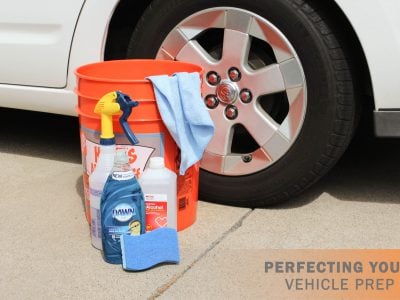Why does cold weather make cast vinyl difficult to install?
-
The vinyl can feel “stiff”’ and lose its ability to be easily conformed around curves and into recesses
-
The adhesive can lose a great deal of its tack and won’t bond securely to the substrate’s surface.
-
The ultimate bond level of the adhesive can take longer to be achieved.
-
Condensation can form between the vinyl and the substrate, further impairing the bond level of the adhesive.
How can we overcome the effects of cold temperatures?

A successful cold weather installation is more than achievable by following a few simple tips. This fleet vehicle is wrapped in DPF 6100XLP. (Wrapped by Elite Wraps UK)
The Installation Environment
Warming the Substrate
Increasing the substrate temperature will also improve the bond between vinyl and surface. When the adhesive is cold, it remains hard and loses an amount of its initial tack. Then, the whetting out process is unable to occur. “Whetting out” refers to the effect of squeegee pressure and temperature, relative to the adhesive. Pressure softens the adhesive allowing it to flow and starts the process of bonding to a high level, and cold temperatures have a huge effect on this process. The low temperatures prevent the adhesive from activating effectively. Adding more squeegee pressure can also improve the adhesive bond during colder weather.
Vinyl and Adhesive
Increasing the temperature of the substrate, environment, and vinyl lessens the time the film needs to firmly adhere to the vehicle. There is no shortcut to this process. By increasing the temperature as explained above, the vinyl will be soft enough to manipulate around curves and recesses. The adhesive will be able to ‘wet out’ effectively. Post heating the entire vehicle will undoubtedly add time to the installation. But it will also ensure that the vinyl is adhering correctly.
Have you tried cold weather installation?
You have the power to conquer any installation, especially when you have control over your installation environment. What is your experience with cold weather installation? Tell us about your cold weather installation challenges in the comments!



